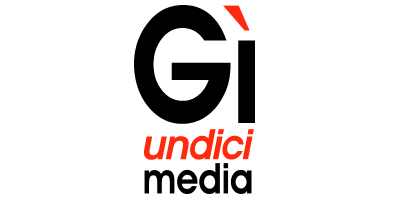Direct Banks Continue to Satisfy Customers by Supporting Them in Challenging Economic Times, J.D. Power Finds
Despite not having branches and interacting with customers primarily through digital channels, direct banks are outperforming traditional retail banks, along with making customers feel supported durin...
Charles Schwab Bank Ranks Highest in Both Checking and Savings Segments
TROY, Mich.: Despite not having branches and interacting with customers primarily through digital channels, direct banks are outperforming traditional retail banks, along with making customers feel supported during challenging times. According to the J.D. Power 2025 U.S. Direct Banking Satisfaction Study,SM released today, overall customer satisfaction with direct bank checking accounts is 692 (on a 1,000-point scale), which is 24 points higher than the average regional bank and 35 points higher than national banks. Savings account satisfaction is even higher (705), which is 89 points higher than regional banks and 98 points higher than national banks.
“Customers of online-only direct banks have higher levels of satisfaction because these banks make them feel supported during challenging times,” said Paul McAdam, senior director of banking and payments intelligence at J.D. Power. “Direct banks do this by enabling customers to grow their money, access credit when needed, improve their creditworthiness and by helping customers manage their spending or budget. Direct banks further improved customers’ feelings of being supported during challenging times by making it easy to access customer service; delivering great app and web experiences; and making sure customers fully understand products and services. Making customers feel supported during challenging times drives a huge bump in customer satisfaction, and the top-performing direct banks are delivering these experiences consistently.”
Following are some key findings of the 2025 study:
- Checking satisfaction increases while savings satisfaction declines: The overall customer satisfaction score for direct bank checking accounts is 692, up 4 points from 2024. Overall satisfaction for direct bank savings accounts is 705, down 5 points from 2024. Both scores are still far higher than the average overall satisfaction scores for midsize banks, regional banks, national banks and neobanks.
- Support during challenging times drives satisfaction scores: The key performance indicator of “bank completely supports me during challenging times,” is responsible for a 73-point rise in checking account satisfaction and an 84-point rise in savings account satisfaction when banks hit the mark. When direct banks achieve these gains, customers reward the banks with higher utilization of direct deposit, higher investment account and credit card ownership, and a lower likelihood of moving deposits to another financial institution.
- Bank support resonating with younger customers: Members of Gen Z1 and Gen Y have the highest year-over-year increase in perceived level of direct bank support. Boomers believe their overall level of direct bank support has declined year over year.
Study Rankings
Charles Schwab Bank ranks highest in overall satisfaction among checking providers with a score of 740, marking the seventh consecutive year of being top ranked in the study. American Express (711) ranks second and Ally (694) ranks third.
Charles Schwab Bank ranks highest in overall satisfaction among savings providers with a score of 748. American Express (737) ranks second and Marcus by Goldman Sachs (735) ranks third.
See the rank chart for each segment at http://www.jdpower.com/pr-id/2025041.
The U.S. Direct Banking Satisfaction Study, now in its ninth year, measures overall satisfaction with direct bank and neobank checking and/or savings/money market products based on six dimensions (in alphabetical order): customer service; ease of moving money; helps grow money; level of trust; managing account via mobile app and managing account via website. The study defines direct banks as online/branchless institutions with federal banking charters, with either the Federal Reserve Board, the Office of the Comptroller of the Currency (OCC) or the Federal Deposit Insurance Corporation (FDIC) as their primary regulator. It is based on responses from 9,391 direct bank customers and was fielded from December 2024 through March 2025.
To learn more about the U.S. Direct Banking Satisfaction Study, visit https://www.jdpower.com/business/us-direct-banking-satisfaction-study.
About J.D. Power
J.D. Power is a global leader in consumer insights, advisory services, and data and analytics. A pioneer in the use of big data, artificial intelligence (AI) and algorithmic modeling capabilities to understand consumer behavior, J.D. Power has been delivering incisive industry intelligence on customer interactions with brands and products for more than 55 years. The world's leading businesses across major industries rely on J.D. Power to guide their customer-facing strategies.
J.D. Power has offices in North America, Europe and Asia Pacific. To learn more about the company's business offerings, visit JDPower.com/business. The J.D. Power auto-shopping tool can be found at JDPower.com.
About J.D. Power and Advertising/Promotional Rules: www.jdpower.com/business/about-us/press-release-info
1 J.D. Power defines generational groups as Pre-Boomers (born before 1946); Boomers (1946-1964); Gen X (1965-1976); Gen Y (1977-1994); and Gen Z (1995-2006). Millennials (1982-1994) are a subset of Gen Y.
Fonte: Business Wire
Related news
Last News
RSA at Cybertech Europe 2024
Alaa Abdul Nabi, Vice President, Sales International at RSA presents the innovations the vendor brings to Cybertech as part of a passwordless vision for…
Italian Security Awards 2024: G11 Media honours the best of Italian cybersecurity
G11 Media's SecurityOpenLab magazine rewards excellence in cybersecurity: the best vendors based on user votes
How Austria is making its AI ecosystem grow
Always keeping an European perspective, Austria has developed a thriving AI ecosystem that now can attract talents and companies from other countries
Sparkle and Telsy test Quantum Key Distribution in practice
Successfully completing a Proof of Concept implementation in Athens, the two Italian companies prove that QKD can be easily implemented also in pre-existing…
Most read
AI Strengthening Cybersecurity Software, ISG Says
$III #AI--Growing and evolving security threats make it increasingly important for enterprises to deploy advanced cybersecurity software and to understand…
Mitsubishi Electric’s ME Innovation Fund Invests in AI-assisted PLM Systems…
Mitsubishi Electric Corporation (TOKYO: 6503) announced today that its ME Innovation Fund has invested in Things, Inc., a Japan-based startup that develops…
Team8 Expands Cyber and AI Focus with New Partner Appointments, Ori Barzilay…
Team8 a global venture fund that builds and invests in companies across cybersecurity, data, AI, fintech, and digital health, as well as their intersections…
Taiwan Prepaid Card and Digital Wallet Market Databook 2025: Prepaid Card…
The "Taiwan Prepaid Card and Digital Wallet Market Intelligence and Future Growth Dynamics Databook - Q2 2025 Update" report has been added to ResearchAndMarkets.com's…






